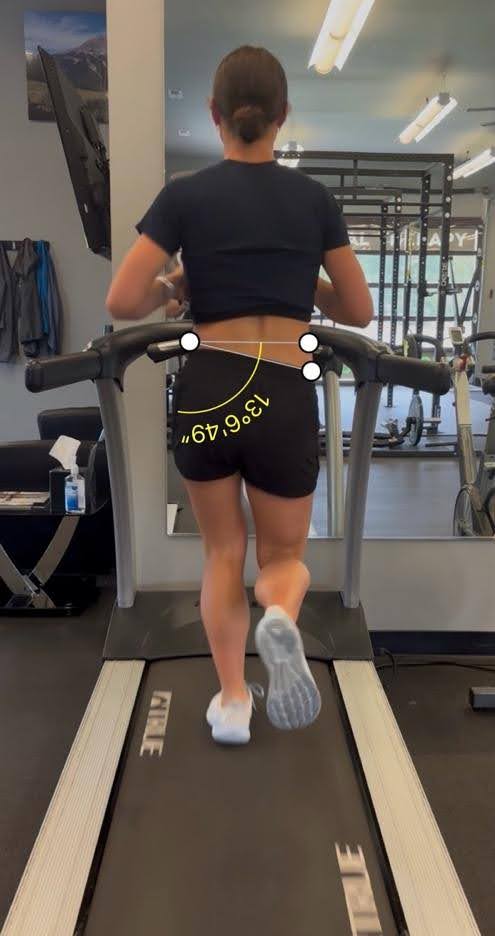By Sophia DeCleene GUEST COLUMNIST
Sponsored Article
As physical therapists, we know that running is one of the most popular forms of exercise, especially this time of year. Whether you’re a seasoned marathoner or a casual jogger, running offers numerous health benefits, from improving cardiovascular health to boosting mental well-being. However, one key factor that is often overlooked by runners of all levels is the importance of your running form and technique.
Proper running mechanics can have a profound impact on your performance, overall efficiency, and most importantly, your injury risk. In this column, we’ll explore why your running form matters and how improving it can help you stay injury-free while making the most of your summer running and training routine!
Why form is key
When you run with improper form or technique, you place unnecessary stress on your joints, muscles, and connective tissues, increasing your risk of injury. Some of the most frequent injuries associated with poor running form are shin splints, runner’s knee and IT Band Syndrome.

Shin splints are often caused by overstriding or landing with excessive force on your heels. To correct this issue, runners can increase their cadence or shorten their stride length easily by running with a metronome app or running with a Spotify playlist set to 160 BPM. Our favorite Metronome App is “Pro Metronom.” It’s free!
Runner’s Knee is a result of poor knee alignment or imbalanced muscle activation.If you notice you tend to be more “knock-kneed” or feel weaker on one hip, it’s time to start an outer hip strengthening routine. Targeting your glutes and lateral stabilizers can help improve your alignment and reduce stress on your knees.
IT Band Syndrome is frequently linked to improper hip mechanics or an uneven stride. If you tend to overstride on one side, especially while running on uneven terrain, try switching to flat road running for a week and focus on evening out your stride to promote balanced, efficient steps and reduce strain on your hips and your knees.
If you are struggling with nagging or reoccurring pain, use these “pro tips” to slightly tweak your running form which can reduce the strain on vulnerable areas like your knees, hips, and lower back. Proper alignment, foot strike, and running posture can help ensure that your body absorbs the impact of running in the most efficient way possible, keeping your muscles and joints better protected.
Improved efficiency: Run faster with less effort
When you run with proper form, you improve the efficiency of your movement. Efficient running means you are expending less energy to cover the same distance, which can improve your overall speed and endurance. Three key elements contribute to an efficient running technique.
First, maintaining an upright posture with a slight lean forward—from the ankles, not the waist—helps you move fluidly without wasting energy.
A quicker cadence—number of steps per minute—with shorter, quicker strides reduces the impact force on your joints and ensures you’re using your muscles in the most efficient way.
Lastly, an ideal foot strike lands your foot beneath your hips to avoid overstriding. A midfoot or forefoot strike is typically more efficient than a heavy heel strike.
Running efficiently doesn’t just help you go faster; it also reduces fatigue, making it easier to run longer distances with less effort. If you are currently training for a race or just getting out there for fun, focusing on efficiency can make a huge difference
The unsung heroes of proper running technique: breathing and posture
Many runners overlook the connection between breathing, posture, and running performance. Poor posture, such as slouching or arching your back too much, can restrict your breathing and hinder your ability to take in oxygen efficiently. This can lead to early fatigue and reduced performance, especially over longer distances.
To improve your posture and ability to get in a full breath while running, try to focus on:
- Keeping your chest open and shoulders relaxed
- Engaging your core to support your spine
- Maintaining a slight lean from the ankles rather than from the waist
How a physical therapist can help
If you are experiencing nagging pain or any discomfort during or after a run, and unsure about what to focus on, come in to see one of our experts at Lone Peak PT & Performance for a Running Analysis Session! In your appointment, we will work with you one-on-one to identify your unique running technique, and help hone in on any biomechanical issues you might be experiencing that are causing you pain or discomfort during or after a run. This is done on a treadmill using high level video analysis and an advanced level biomechanical assessment comparing your running technique side to side.
Through our Running Analysis, we gather data to help you correct your form and technique, improve efficiency, reduce pain, and ultimately lower your risk of developing overuse injuries.
After identifying the root of the issue, we design a customized exercise program tailored specifically to your needs. This program targets muscle imbalances, enhances flexibility, and strengthens the key muscle groups necessary to correct your movement patterns, ultimately giving you the essential tools to help you run stronger, longer, and with less pain.
Final thoughts
Running is a fantastic way to stay fit and challenge yourself, but it is crucial that you use proper form and technique to stay healthy. By improving your running mechanics, you will benefit by reducing your risk of injury while simultaneously enhancing your performance. If you have any questions about a specific problem you are experiencing during or after running, don’t hesitate to reach out to us. At Lone Peak PT & Performance, located in Bozeman and Big Sky, we are dedicated to helping runners of all levels improve their form and reach their goals. Call or text us to speak to an expert today.

Sophia enjoys treating orthopedic and sports related injuries. She is passionate about the physical therapy profession as it allows her to provide one on one care with the goal to return her patients to their favorite recreational activities. She encourages active lifestyles and educates patients on how each exercise relates to their functional goals. Sophia incorporates clinical experience and current research in order to utilize the best evidence-based approach individualized for patient-centered care. Sophia grew up in Green Bay, Wisconsin enjoying Packers games, farmers markets, time on the lake, and going to concerts. When she is not in the clinic, you can find Sophia spending her free time running, hiking, skiing, reading, cooking, or enjoying the sunshine.













